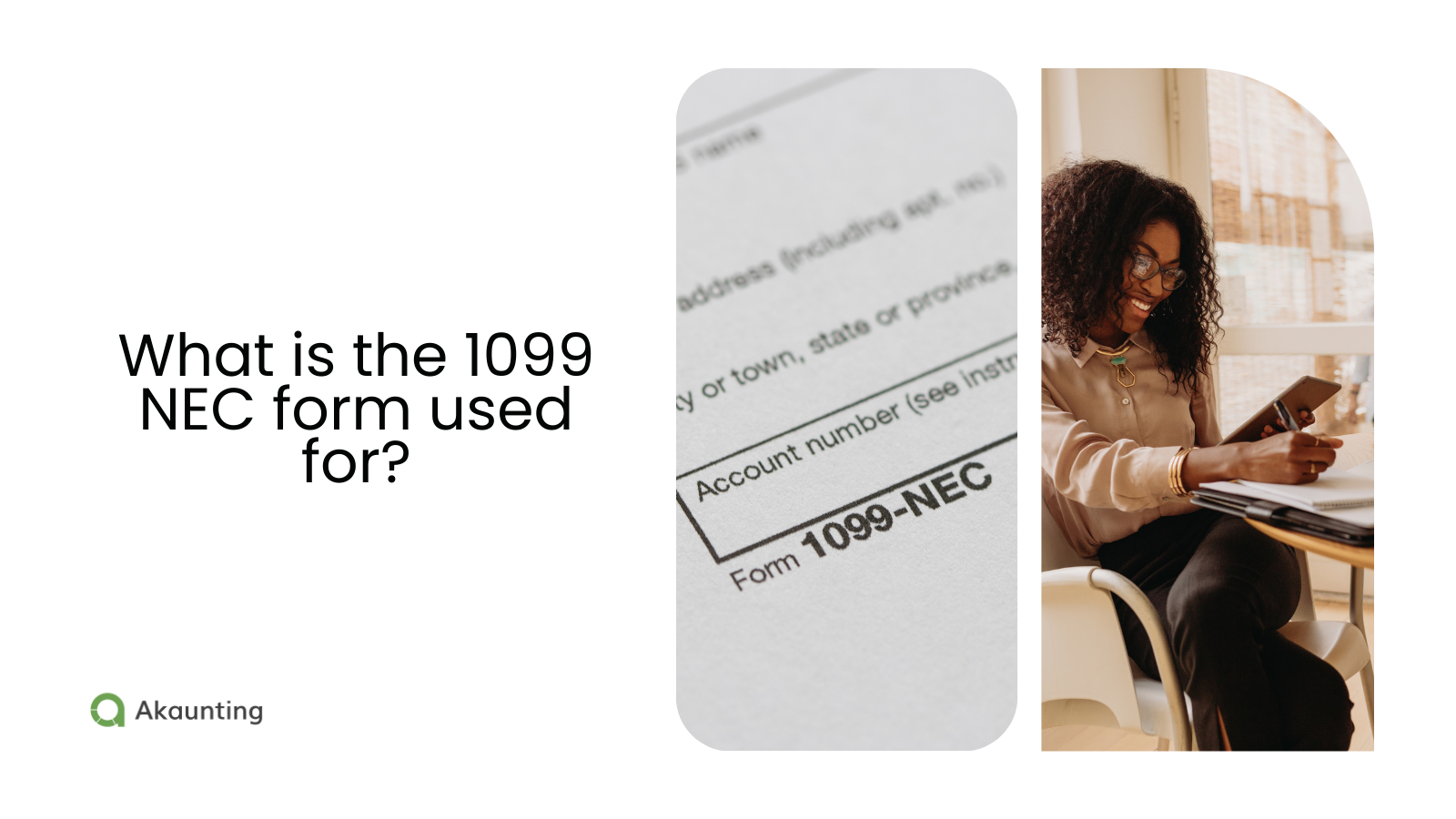Accounts payable vs accounts receivable: Knowing the difference
Reading Time: 6 minutesEvery business makes and receives payments which, in basic terms, explains Accounts payable vs. Accounts receivable.
In this article, you’ll understand accounts payable and accounts receivable, examples, how to record them, the processes involved, and their differences.
So, let’s get into understanding each term.
What is accounts payable (AP)?
When your business is involved in a transaction to purchase a good or service, the money owed to the supplier/vendor is classified as accounts payable. The recorded debt is usually time-specific and obligated to pay off to creditors within a period.
In larger companies, Accounts payable refers to a department or division responsible for managing and settling invoices or bills owed by the company to vendors.
As a small business, it is crucial to pay close attention to your accounts payable and control expenditures as it affects your bottom line.
If AP increases over a specific time, it means your company is buying more goods or services on credit rather than paying cash. In contrast, when AP decreases, your company makes payments for received goods/services faster than purchasing them on credit.
Accounts payable management is critical in managing your business’s cash flow. Let’s take a look at some examples.
Accounts payable examples
It’s important to note that Accounts payable are different from current liabilities like short-term loans, accruals, proposed dividends, or bills of exchange payable. Examples of accounts payable expenses may include:
- Bills payable – power, telephone, etc.
- Transportation/Logistics
- Purchase of raw materials, products, or equipment
- Received services
- Rentals
- Licensing
Accounts payable may include more than those listed above. When your company receives any listed services or purchases on credit, it is essential to record the amount to AP to keep your balance sheet up-to-date.
An accurately recorded AP simplifies your bookkeeping efforts and makes transparent accounting processes.
Where do you record AP on the balance sheet?
Accounts Payable is not an asset and therefore recorded under current liability on your company’s balance sheet.
Keeping a detailed recording of AP impacts your company’s cash flow, credit rating, borrowing costs, and attractiveness to investors. A non-detailed AP could lead to an under-representation of the total liabilities, thereby overstating net income in financial statements.
What is the AP process?
Running a business with up-to-date financial statements requires maintaining the timeliness and accuracy of your accounts payable process. Before making payment to vendors, you need to follow these four steps:
- Receive a bill
- Review bill
- Update records and get authorization
- Make payment
Receive a bill: After purchasing items or receiving a service from a vendor or supplier, you should request a bill from them. The bill should state the due date.
Review bill: Check the bill’s details, which should include the vendor’s name, address, authorization, and any other relevant information. Verify the given elements, checking for the accuracy of the purchase order.
Update records and get authorization: You receive the bill and update accounts payable records. Where you need approval for payment, you’ll need to get the authorization.
Make payment: After receiving a bill and getting approval, payment should be made on or before the vendor-stated due date. Using bookkeeping software can allow you set reminders for recurring bills, ensuring you don’t miss out on due dates.
Let’s take a look at Accounts receivable.
What is accounts receivable (AR)?
Accounts receivable is the money customers owe you due to services or goods offered by your business in a period.
For example, your company sells HP PCs. You supply 30 pieces of these PCs to a customer with an invoice detailing the order and a due date.
Before the customer makes a payment, you record this transaction as accounts receivable.
A company with receivables has made a credit sale but has yet to collect the money from the customer. The due date for payment of receivables could range from a few days to a calendar year.
Accounts receivable is essential to your business’s fundamental analysis as it measures liquidity or the ability to cover short-term commitments without additional cash flow.
Let’s see some examples.
Accounts receivable examples
Examples of accounts receivables include:
- Bills receivables
- Unpaid invoices
- Sales on credit
- Services offered on credit
Because accounts receivable is usually associated with granting credit to customers with the allowance to pay later, it potentially expands the number of customers for your business, resulting in an increased market share.
The downside could lead to increased bad debts, especially with a loose credit policy.
Where do you record AR on a balance sheet?
Record Accounts receivable under current assets on the balance sheet or the general ledger.
They are classified as an asset as they represent unearned cash for a service or value provided by your company.
What is the Accounts receivable process?
Setting up an accounts receivable process is necessary for your business to limit the situation of bad debts from customers. With the process, you can easily track and manage your receivables.
There are five steps in the accounts receivable process:
- Establishment of credit policy
- Invoice customers
- Set payment terms and due dates
- Track and monitor account receivables
- Record Account receivables
Establishment of credit policy
Before starting-up credit transactions with a customer, it is essential to do background checks and set up policies that guide the process. This way, you can limit your business’ credit risks, such as delayed payment, missing payment, or bad debts.
Credit policies should cover but are not limited to:
- The customer’s eligibility for a credit system
- The terms and conditions for a sale
- The average sales required for a credit
- The payment terms
- The approval terms for every credit
- The penalties involved in case a customer defaults
- Who oversees the credit approval process
Furthermore, it is crucial to have Everyone in the business on the same page. Everyone should understand the company’s cash flow policy, from sales team members to accounting professionals.
Invoice customers
After establishing a credit policy and agreed-on terms, customers usually expect an invoice for your business’s goods or services. It would be best if you issued an invoice for every item your business offers, and this should be done at the earliest possible time to avoid delays in payments or missing invoices for payments.
Invoices could be in the form of:
- Paper
- Electronic (one-time or recurring)
- Financial statements
A structured process for invoicing your clients is critical to maintaining an effective accounts receivable process.
Set payment terms and due dates
You need to state clearly the payment terms for every invoice your business issues to customers to be paid on time. Define the payment plans, due dates, and amounts to be paid based on the initial agreement by both parties involved in the transaction. Ensure that your business invoices are designed to state payment policies clearly.
Track and monitor account receivables
You should keep track of invoices sent to customers, considering each invoice’s age.
“Age” or “Aging” is the length of time an invoice has been outstanding and helps you get a better view of your company’s bad debts and financial health.
The monitoring and reporting for AR may differ by the size of your company, as it may involve the number of resources, staff, and time available.
If you are working with accounting software, some features could help you track and monitor your accounts receivables by reporting on outstanding, due, and recently paid invoices.
Record Account receivables
The accounts receivables process isn’t complete without timely records of paid invoices or sales.
Ensure you match all payments to invoices to ensure accurate bookkeeping during a fiscal year. This way, you can also track unpaid invoices, follow up on them or write them off if necessary.
Some accounting software lets you match your bank transactions with invoices, simplifying your record-keeping process.
Having discussed Accounts Payable vs. Accounts receivable, let’s examine their critical differences.
Difference between accounts payable vs. accounts receivable
Accounts payable refers to money your business expects to pay to a vendor or service supplier. In contrast, Accounts receivable are the funds a company intends to collect from customers. Accounts Payable (AP) could be logistics, recurring bills, operational, and general expenses.
Here are the critical differences between accounts payable and accounts receivable
| Accounts Payable | Accounts Receivable |
| Money to be paid by a business to creditors for the purchase of raw materials or services | Money to be received by a business for sales or services made on a credit basis |
| The amount that the company owes | The amount that is owed to the company |
| Recorded as a current liability on the balance sheet | Recorded as a current asset on the balance sheet |
| Cash outflow | Cash inflow |
| Recognized as income unless written off | Recognized as a liability until paid |
| Components of Accounts payable are creditors and ills payables | Components of Accounts receivable are debtors and bills receivables |
| Responsibility and accountability lie in the business | Responsibility and accountability lie in the customer |
Final thoughts on accounts payable vs. accounts receivable
You must keep good records of your bills and invoices. Proper documentation of your business transactions ensures you do not have the challenges of overestimating or underreporting profits. Your business also gets to maintain good financial health.
While dealing with customers on a credit basis is excellent for expanding your business customer base, it’s essential that you set up good credit policies that would limit bad debts, which can put your company at risk.






